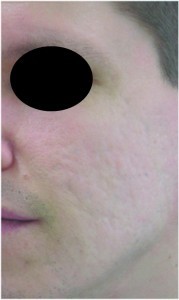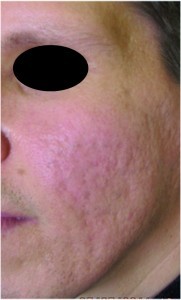Recent trends in aesthetic treatments are for a natural and healthy look, less invasive procedures, combined treatments, repetitive treatments, and regular care. The optimal aesthetic treatment should be effective, safe, suitable for different areas of the body, easy to perform, and with minimal recovery time. As ageing is a continuous process, the treatment should also be suitable for repetitive treatments, while reinforcing the natural and healthy look of the skin. Much is being discussed with regard to — if one starts early enough — whether it would be possible to postpone major surgical procedures. However, despite surgery, one still has to treat and maintain the quality of the skin. This article discusses the possibilities of using the INTRAcel platform in skin rejuvenation, acne, enlarged pores, acne scars, scars, and stretch marks.
One of the main goals of aesthetic treatments is to alleviate and slow down the appearance of the signs of ageing. Skin ageing begins with a little looseness of the skin and fine lines, and continues with flaccidity, wrinkles, photodamage and sagging of the tissues.
For a long time, ablative and fractional ablative laser treatments have been widely used for skin resurfacing and tightening. The well-known side-effects of these procedures are pain, prolonged downtime, erythema, permanent scarring, and pigmentation disorders. In rejuvenation, ablative laser treatments have a limited suitability for regular maintenance procedures and have a minor lifting effect. Therefore, there remains a need for a comprehensive approach to rejuvenation and safer, more effective aesthetic treatments.
Microneedling
Microneedling (sometimes called collagen induction therapy) is often used for rejuvenation and the treatment of scars. This treatment method uses a stamp or a roller, pressing 0.5–2 mm needles into the skin. The small wounds are closed immediately, but the mechanical injury initiates the wound healing process and stimulates the proliferation of fibroblasts and production of collagen and elastin1. The formation of new capillaries improves the blood supply to the skin. Microneedling is also used to increase the transdermal delivery of active skincare substances2.
Radiofrequency
Radiofrequency (RF) energy generates heat depending on the resistance of the specific tissue. RF has been used to provide a controlled and moderate level of tissue heating in different areas of medicine for many years. RF is widely used in surgery, oncology, cardiology and other fields of medicine, and for many different indications. The advantage of RF is the relatively low-level heat developed by the devices, which diminishes the tissue burns and allows for a safer treatment profile.
RF has been used in aesthetic skin treatments for more than 10 years. It has been shown to stimulate the restructuring of collagen and elastin, resulting in better skin quality and the reduction of wrinkles3, 4. The energy levels used in non-invasive RF devices have been limited to the tolerance of the epidermis. Therefore, the energy levels in the deeper dermis have been relatively low, resulting in a sub-optimal dermal heating effect. Subsequently, the results of non‑ablative RF procedures have generally been moderate5. Fractional RF microneedling technology (FRM) overcomes this problem, targeting different levels of the dermis without inducing heat damage to the surface of the skin. This enables an effective treatment with a better safety profile. FRM has been reported to give good clinical results in the treatment of acne scars and large facial pores6, and rejuvenation7 with minimal side‑effects.
INTRAcel
The original INTRAcel device (Jeisys Co, Seoul, South Korea) uses 49 partly insulated microneedles targeting bipolar RF (FRM-bipolar) at variable pre-selected depths into the skin. The depth of the treatment can be selected between 0.5–2 mm and the RF emission is adjustable to seven levels ranging between 0–2.4 J. The energy deposition takes place within 0.04–0.1 seconds. Each needle has an insulated coating, allowing the release of thermal effect only from the tip of the needle, preserving the skin’s surface. Therefore, the risk of post-inflammatory pigmentation disorders is reduced, and the microneedling treatment modality is suitable for all skin types. Furthermore, the barrier function of the skin is preserved, enabling a quick recovery.

Figure 1b. Severe acne scars after six INTRAcel treatment sessions. Previous treatments were mechanical abrasion, ablative CO2 (three sessions), and fractional CO2 (10 sessions)
The INTRAcel device was originally developed to treat acne scars and acne, but it was soon noticed that it can also be successfully used for rejuvenation treatments, other scar types, and stretch marks. It improves skin texture, fine lines, deeper wrinkles, and skin laxity. The second generation All New INTRAcel device is a three‑fold treatment platform that includes monopolar fractional microneedling (FRM‑monopolar), bipolar fractional microneedling (FRM-bipolar), and minimally ablative superficial RF rejuvenation (SRR). The monopolar RF can go deeper than bipolar RF. As skin impedance influences RF delivery, the new INTRAcel device includes an impedance monitoring function, automatically calculating the output value. This function is essential for safe and effective intradermal monopolar RF delivery. Each treatment modality can be used individually, as well as in combination.
Absolute contraindications for the treatment include pacemaker, previous use of gold thread skin rejuvenation, keloid formation constitution, and skin infections.




